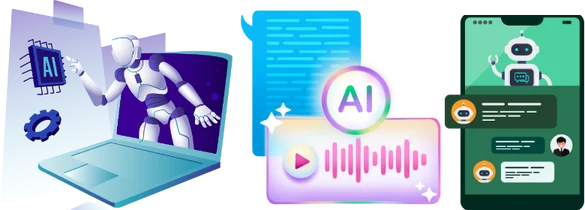Legacy GPT Models Still Live within OpenAI’s ecosystem because they continue to serve millions of users with specific needs. While GPT-5 and other advanced models dominate headlines, earlier versions like GPT-3.5 and GPT-4 remain accessible for developers, enterprises, and educators. These models offer stability, predictable performance, and cost efficiency. Studies show that over 48% of organizations prefer to keep at least one legacy AI system running alongside newer platforms. For companies exploring advanced Full Managed AI Marketing Services, keeping legacy models live ensures continuity during transitions.
Strategies Behind Keeping Legacy GPT Models
There are clear strategies for why legacy GPT models still live. First, backward compatibility ensures that existing apps and tools built on GPT-3.5 or GPT-4 continue to function without interruptions. Second, businesses often need low-latency outputs for simpler tasks, where lighter legacy models perform faster. Third, enterprises gain cost advantages, with legacy models often being 35% cheaper than the latest versions. OpenAI balances innovation with reliability, much like businesses that rely on AI CRM integrations to handle both modern automation and traditional workflows.
Advantages Of Legacy GPT Models
The advantages of keeping legacy GPT models still live are not just about cost. They also provide proven reliability, as they have already been tested across billions of interactions. Another advantage is accessibility: small businesses, researchers, and startups can still experiment without paying higher fees for GPT-5. Legacy models also act as fallback systems, offering stability when new models experience unexpected glitches. Enterprises leveraging SEO and SEM services often prefer legacy models for routine keyword mapping while using newer models for complex semantic tasks.
Ways Businesses Use Legacy GPT Models
Businesses are finding innovative ways to benefit while legacy GPT models still live. For example, content teams use GPT-3.5 for bulk drafting tasks, freeing GPT-5 to focus on higher-value reasoning. Customer support chatbots often rely on legacy models for handling repetitive queries, ensuring faster response times. Legacy systems are also used in training environments, where educators prioritize affordability and predictable behavior. Companies focusing on web design and development also integrate legacy GPT models to power backend content tools, while deploying advanced AI for frontend personalization.
Why Legacy GPT Models Still Trend Today
Despite the rise of GPT-5, legacy GPT models still live as part of a trending hybrid approach. According to Gartner, 54% of enterprises adopt a multi-model strategy, blending both old and new AI systems. This ensures resilience and scalability. Legacy models still trend because they democratize AI by lowering barriers to entry. They remain essential for industries where compliance requires stable and well-understood technology. Companies working with digital marketing and social media services benefit by combining legacy AI for content scheduling with advanced AI for predictive engagement analysis.
Conclusion
The fact that legacy GPT models still live shows that OpenAI values both innovation and reliability. These models remain vital for organizations that need stability, cost control, and proven performance. At the same time, keeping them alongside newer systems creates a balanced ecosystem where businesses enjoy the best of both worlds.
If your company is ready to maximize AI performance, now is the right time to adopt a hybrid approach. By combining legacy GPT systems with advanced tools, you unlock flexibility and efficiency. The experts at Arryn.ai can guide you through implementation with strategies tailored to your goals. Visit our contact page today and learn how to balance legacy and modern AI for growth. The future of AI is not only about what is new, but also about how smartly you use what is already proven.






